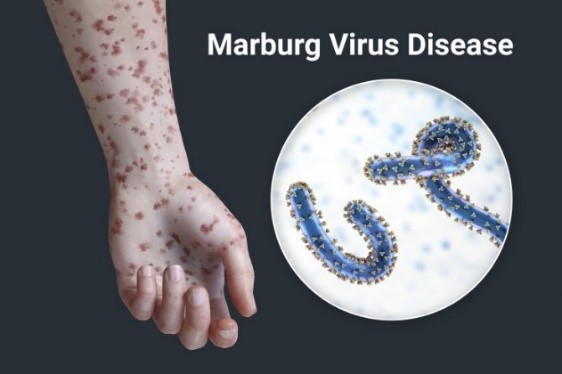Marburg virus disease

Marburg hemorrhagic fever, Marburg virus is an acute viral disease characterized by a severe course, hemorrhagic syndrome, and damage to the liver, gastrointestinal tract, central nervous system and high mortality.
The disease caused by Marburg virus was first identified in 1967, in Marburg, Frankfurt and Belgrade, among researchers working with green monkeys from Uganda.
According to WHO, an outbreak of Marburg virus occurred in Rwanda in September 2024, resulting in dozens of people becoming infected.
The natural foci of Marburg fever are the countries of Southern, Western and Central Africa: Democratic Republic of Congo, Liberia, South Africa, Sudan, Gabon, Zimbabwe, Guinea and Kenya. Marburg virus belongs to the family of filoviruses, which cause severe fever.
The source of infection is mice, virus infection occurs through contact with bodily fluids of infected animals and humans.
Transmission of the infection occurs when the virus enters
- skin and mucous membranes:
- on injured skin, mucous membranes
- eyes and gastrointestinal tract
- by contact with surfaces and materials contaminated with bodily fluids (bedding, clothing)
- through sexual contact
The virus remains in the blood of those who have been infected for up to three months or more, so there is a risk of infection for others.
The incubation period lasts from 2-16 days, but the first symptoms may appear up to 21 days, which makes diagnosis difficult. At the initial stage, the symptoms of Marburg virus are often similar to those of other diseases.
Main symptoms:
- sudden onset of fever
- headaches
- severe malaise, muscle pain
- abdominal pain and cramps
- nausea, vomiting
- rash that does not itch
- acute diarrhea
- severe internal bleeding
Prevention measures:
- refrain from traveling to countries in West and Central Africa where there are natural foci of the disease
- avoid contact with infected persons
- refrain from contact with wild animals
- use personal protective equipment when caring for sick people
- practice good personal hygiene
The danger lies in the lack of a vaccine and specific treatment. But despite the lack of a vaccine, early diagnosis and timely supportive therapy play an important role in improving the chances of recovery.
Strict preventive measures such as contact tracing and quarantine measures are necessary to control infection, which play a particularly important role in the prevention of Marburg virus. The disease is not airborne, so if quarantined in a timely manner, it does not spread to large numbers of people.
The Ministry of Health of the Republic of Kazakhstan closely monitors the situation of development of the epidemiological situation with Marburg virus.
In order to prevent the importation and spread of the disease in the country, sanitary-quarantine control at the state border is carried out at international airports.




